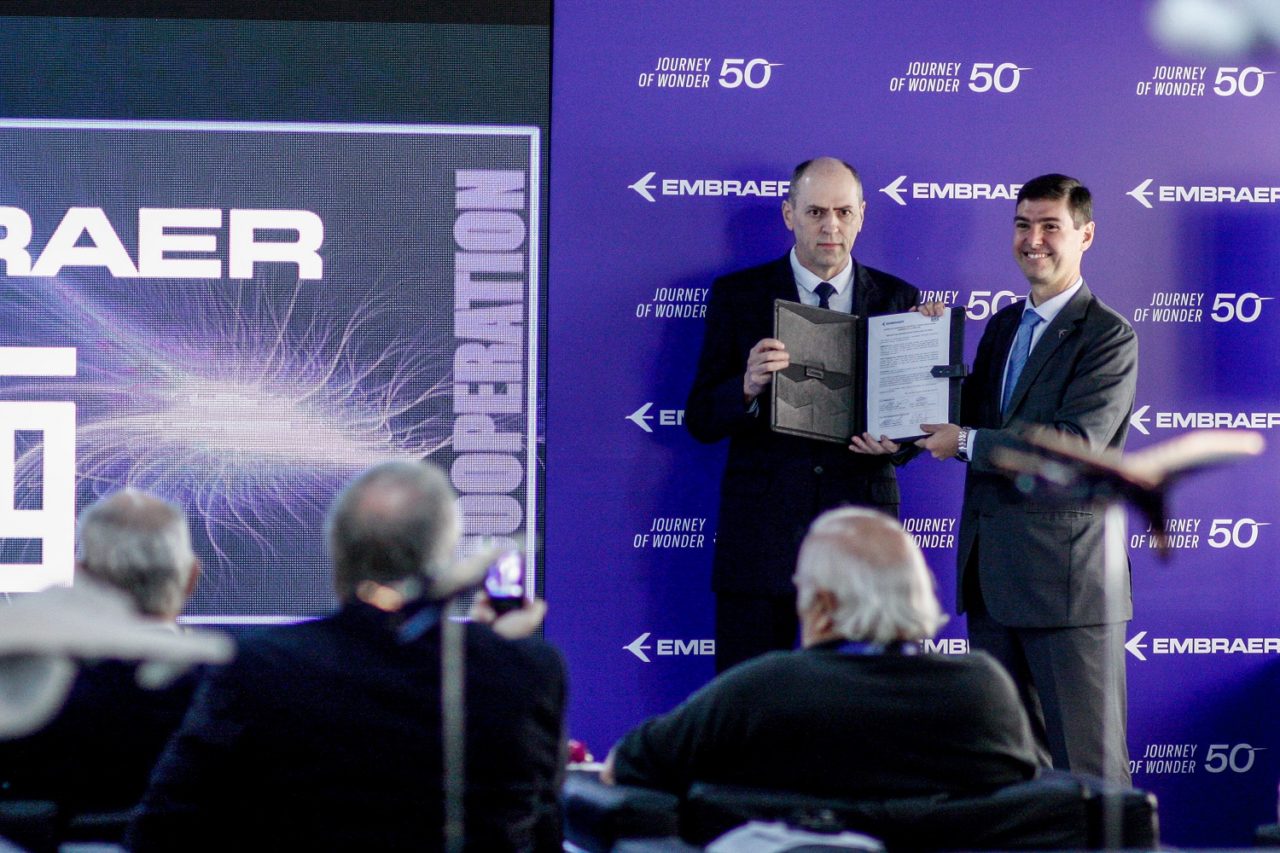
Leadership from Embraer and WEG announce the ratification of their agreement to pursue electric aircraft propulsion. (Embraer)
Embraer has signed a cooperation agreement with electronics company WEG to develop electric aircraft propulsion solutions.
Aimed at the aviation industry’s global goal of reducing carbon emissions, the planemaker’s partnership with its fellow Brazillian company is scheduled to produce a 2020 first flight for an electrically powered single-engine plane based on an Embraer EMB-203 Ipanema.
“Advances in scientific research can make clean and renewable energy a major enabler of a new era of urban and regional air mobility that is more accessible to the population,” said Daniel Moczydlower, Embraer’s executive vice president of engineering and technology.
Embraer plans to grow from the small demonstrator to other configurations and “the possibility of developing new market segments,” he said.

Want more eVTOL and air taxi news? Sign up for our brand new e-letter, “The Skyport,” where every other week you’ll find the most important analysis and insider scoops from the urban air mobility world.
The company’s urban air mobility business, Embraer-X, is simultaneously building an air taxi concept — the DreamMaker — with the goal of running on electric power.
“Our powertrain technology, developed over years for tried and tested applications in trains, buses, trucks and boats, and in constant evolution, has paved the way for this exciting scientific and technological cooperation project,” said Manfred Peter Johann, superintendent director of WEG Automation. “Together with Embraer, we will work not only to enable the electric propulsion of aircraft, but also to increase the technological capacity of WEG, of Embraer and of Brazil, taking our country to an even more competitive level.”
The companies’ pre-competitive research and development will begin with lab work, but with a scheduled first flight next year, the companies plan to move fast.